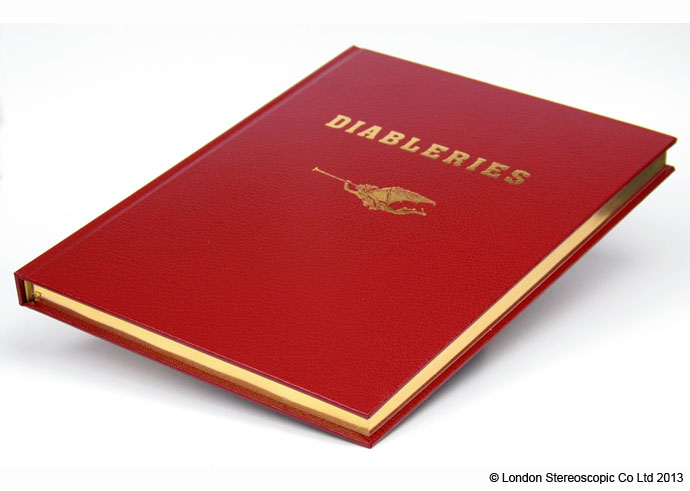

Aimed more at children, it has remained a popular thing in various incarnations over the decades. But the concept didn’t so much die as evolve – in 1939 the View-Master was launched, which was essentially a miniaturised version of the concept, with 3D images on a circular reel that you would view on the handy viewer, originally made of bakelite and later in plastic. The craze for stereoscopes came to an end as the new century started – no matter how sensational the images, the new motion pictures were hard to compete with.

And the images contained their own secrets, thanks to a technique known as the ‘French Tissue’ that, once light was shone through from behind, turned the monochrome images into startling colour – a devilish bit of magic in itself – and gave the Devil a new twinkle in his eye thanks to pinpricks in specific points of the cards. There’s a sense of fun in these images that is infectious.

These clay tableaux have the same sense of riotous irreverence as Georges Méliès’ films half a decade later, and they burst with life and anarchy.

If these were supposed to be cautionary images of what eternal damnation was, then they failed miserably Hell here looks like a jolly old place. These images featured intricately sculptured figures and sets, sometimes with painted backgrounds, and while the first few showed very serious, Biblical images of Satan – from his fall from grace to his evil temptations of man – they soon developed into something rather more playful, with the Devil and the skeletal denizens of Hell shown as having a whale of a time. But from around 1860 to 1900, a fascinating series of cards were produced under the name ‘Diableries’. Most stereoscopic images were scenes of reality – public parades, the celebrities of the day, newsworthy moments and, of course, saucy images of naked women. Thus was born the intermittently popular 3D boom, one that has developed in technique and style over the subsequent two centuries, but which is essentially aimed at the same result – a sense of depth and wonder for visual images normally seen ‘flat’. Once your eyes had adjusted – anything from a few seconds to a few minutes, depending on the individual – you would see the photograph in startling three dimensions, with depth and realism. Stereoscopy involved two images, printed side by side, and looked at through a special viewer. In the mid-1800s, a new craze based around the recently invented art of photography. The Devilishly playful images of Hell, damnation and Satan at play that delighted France and England in the Victorian age.


 0 kommentar(er)
0 kommentar(er)
